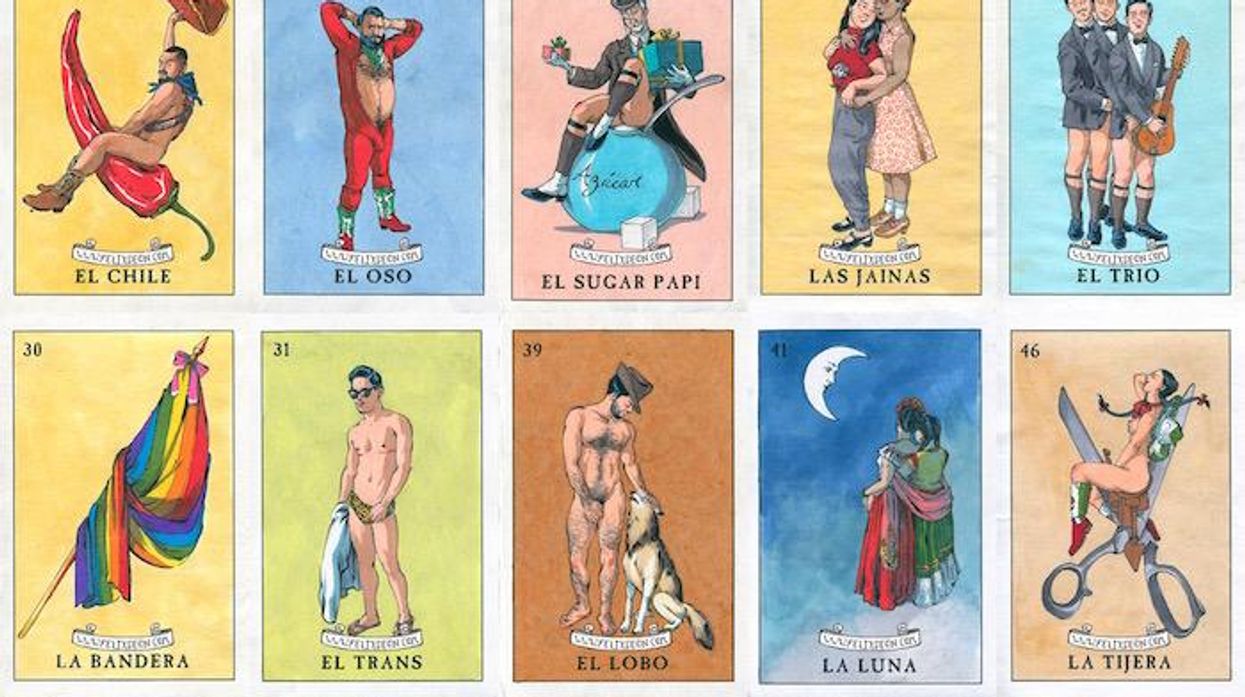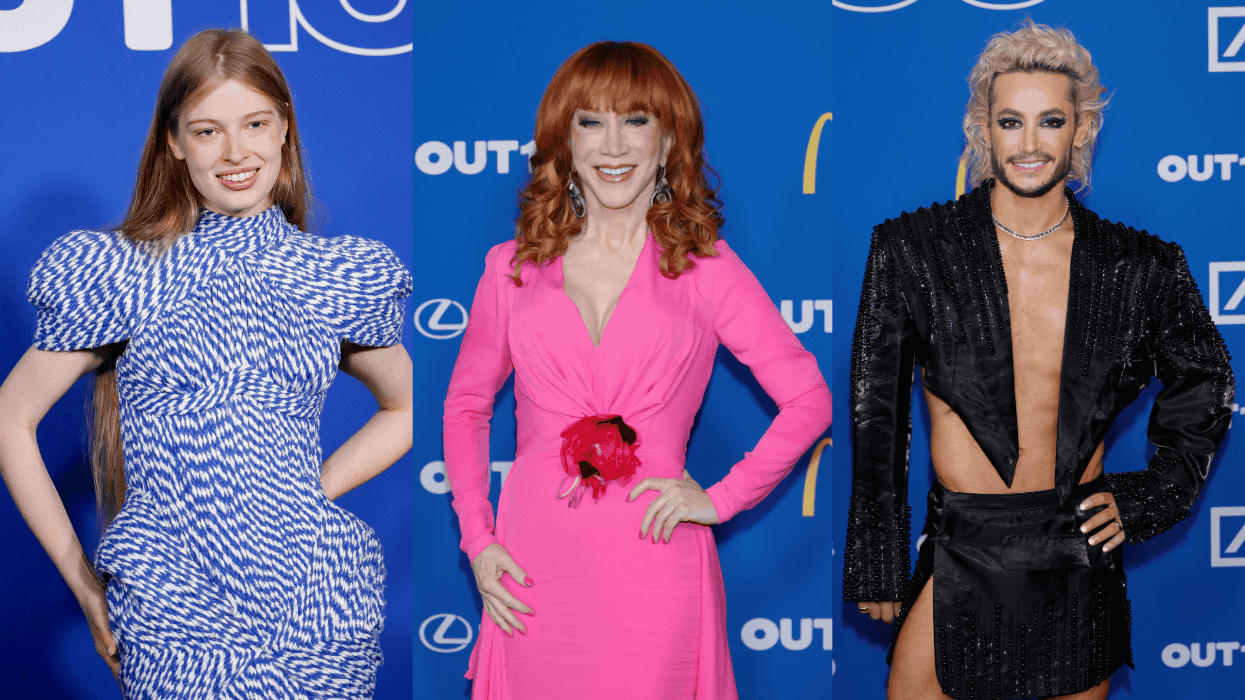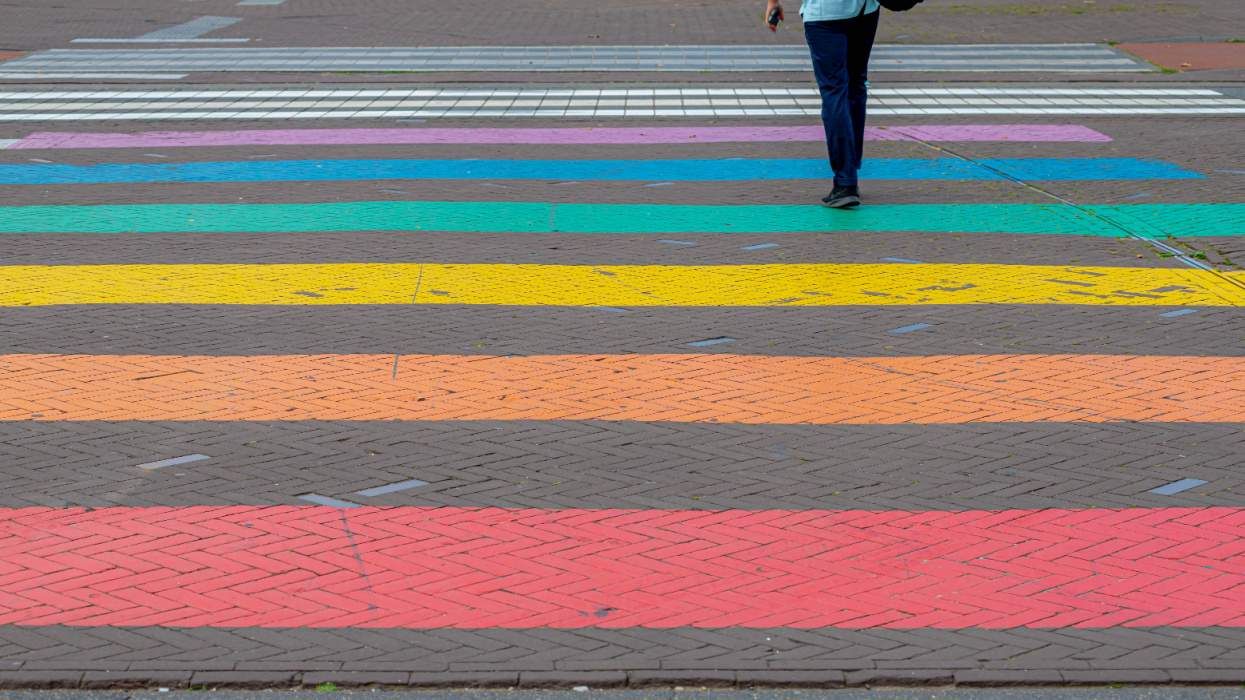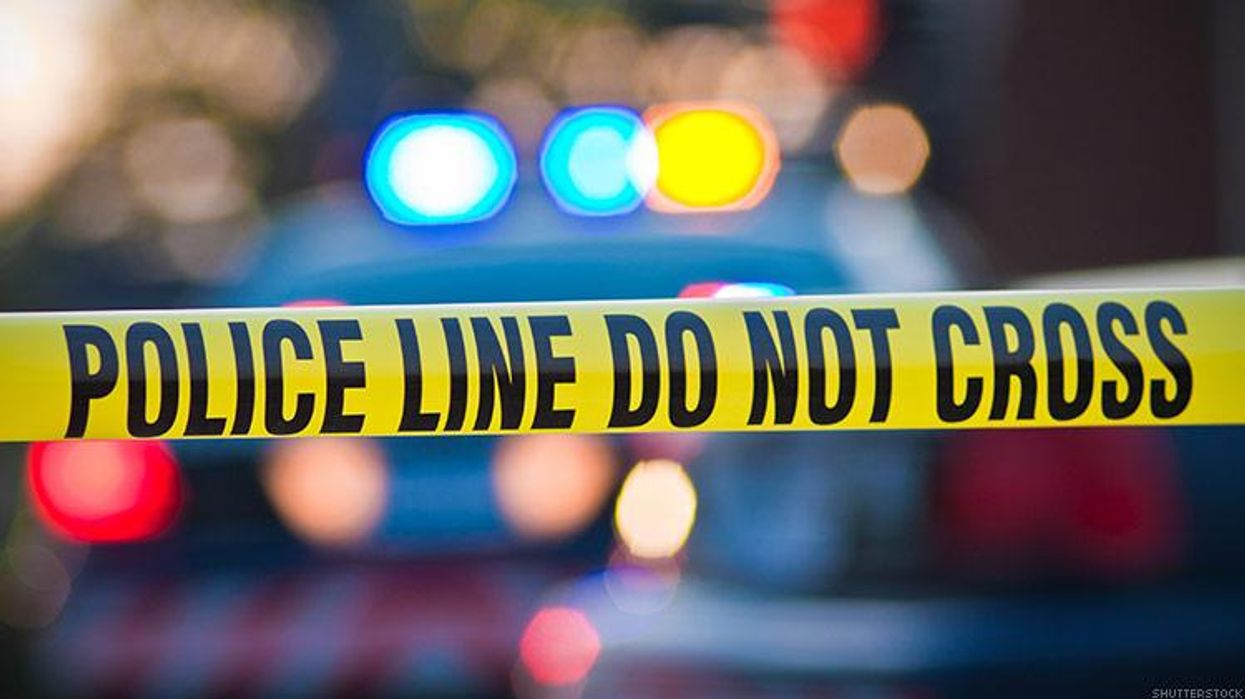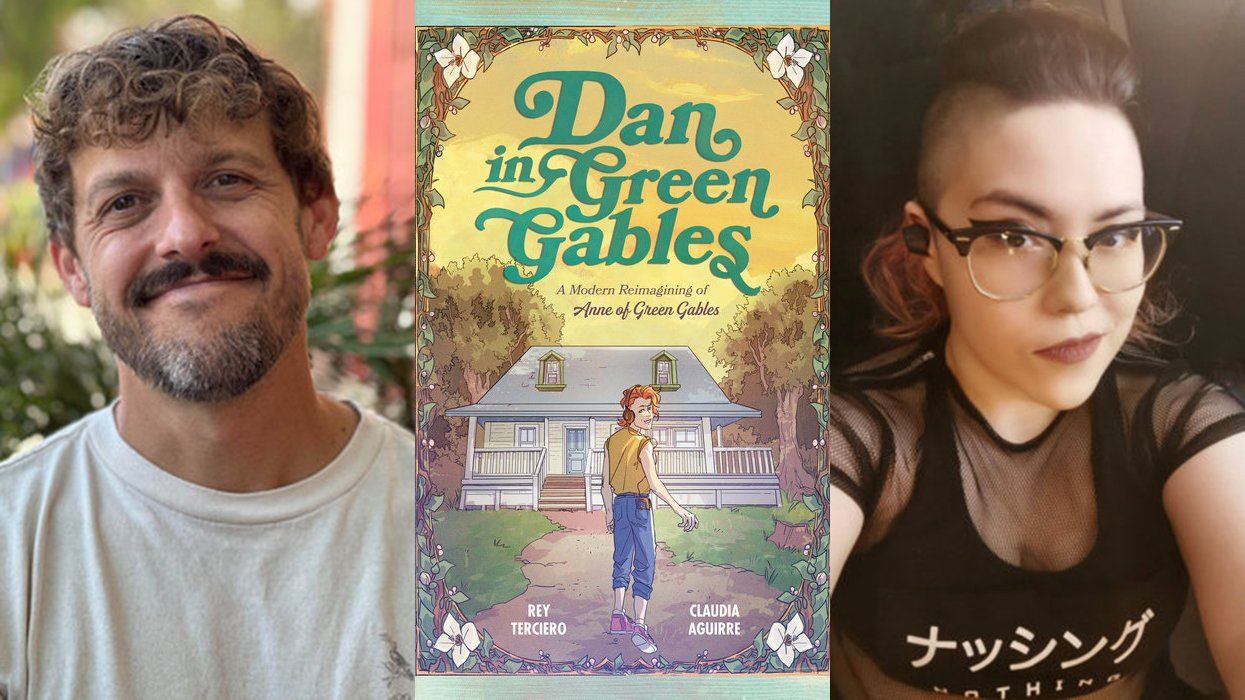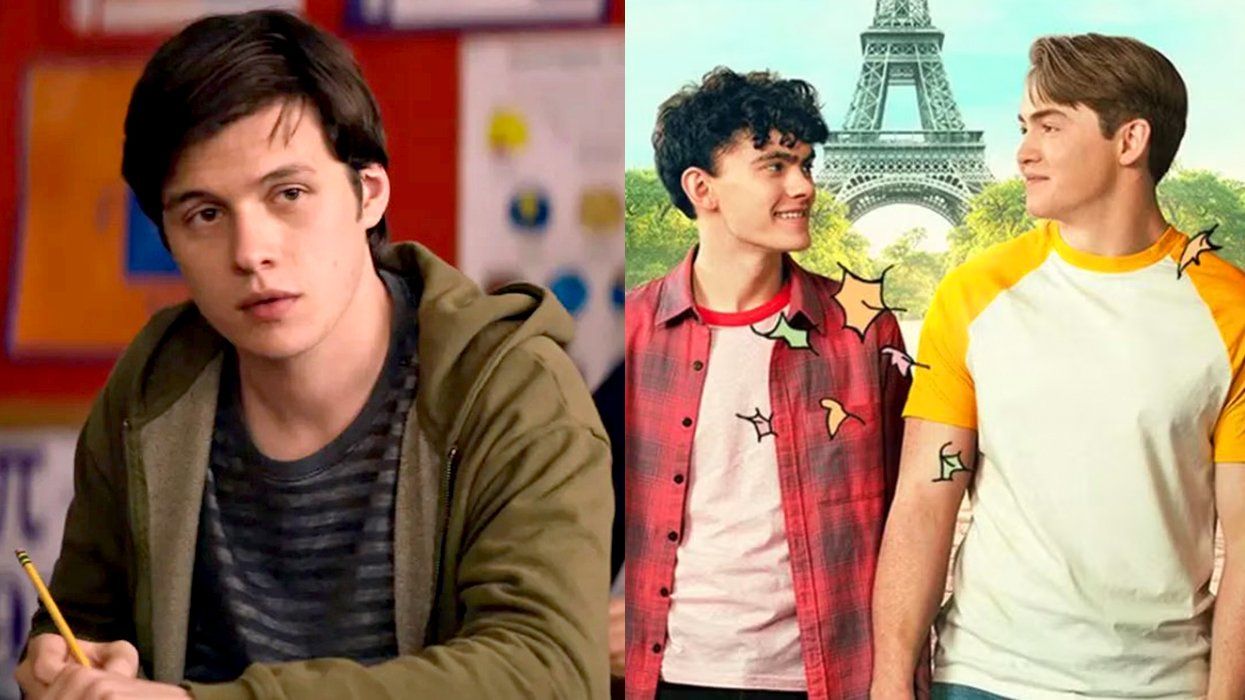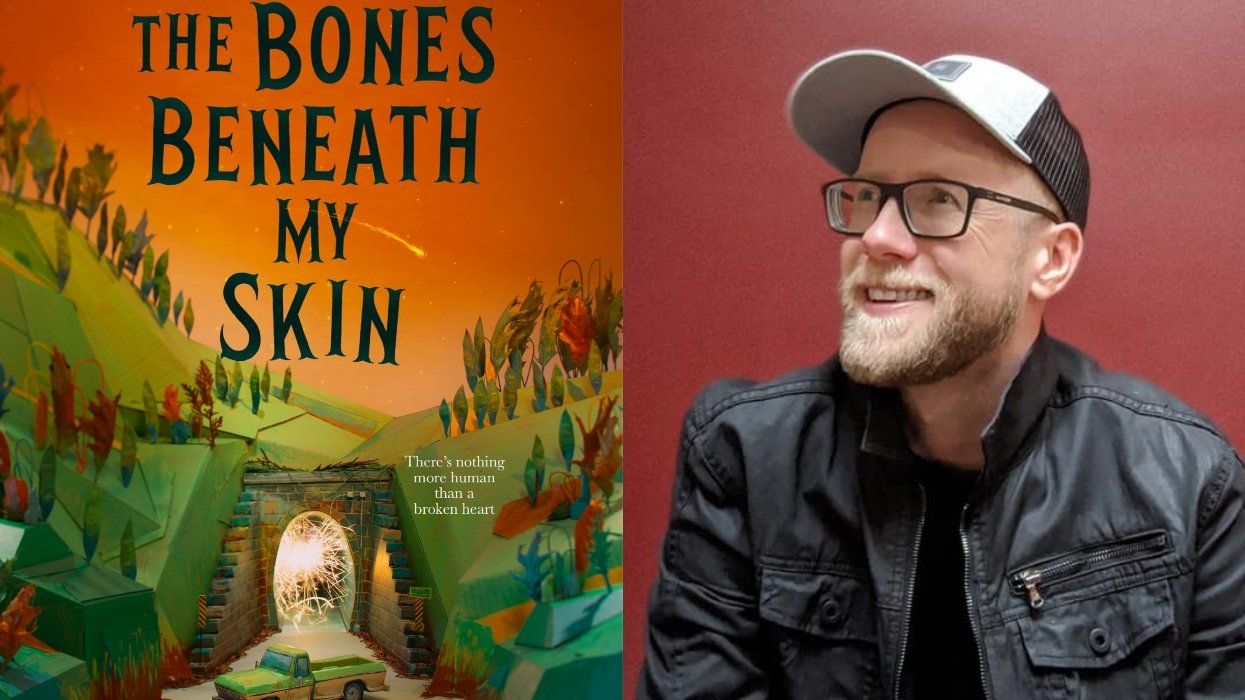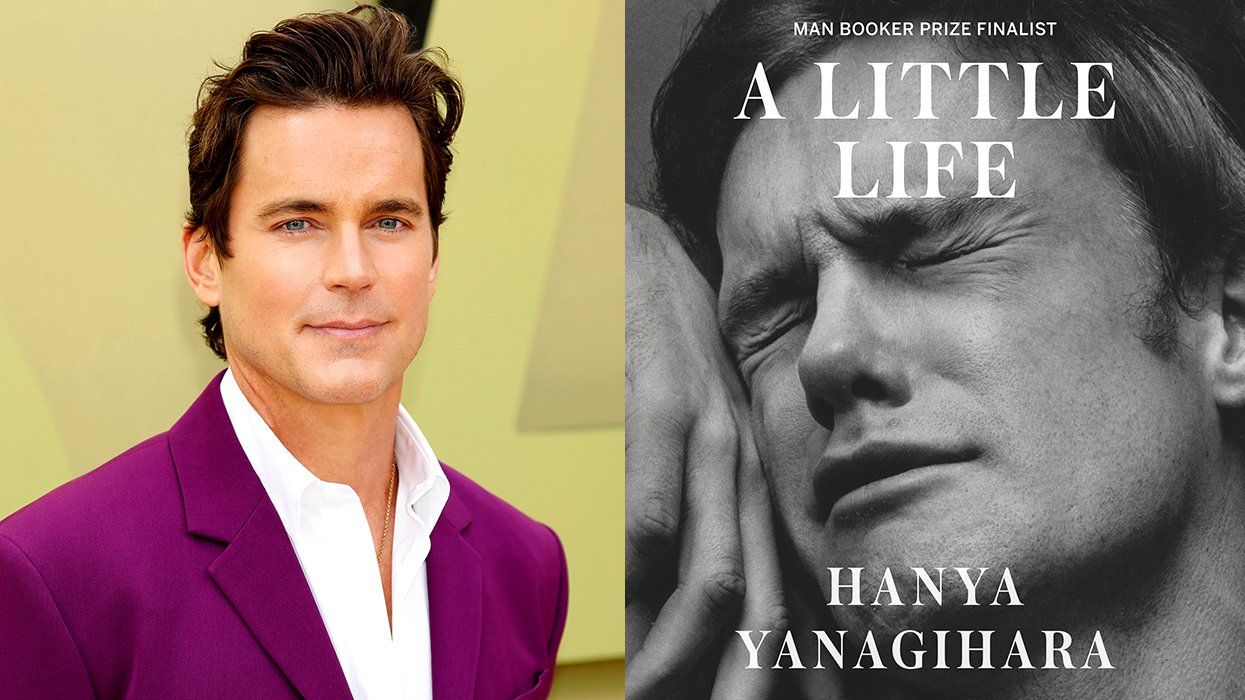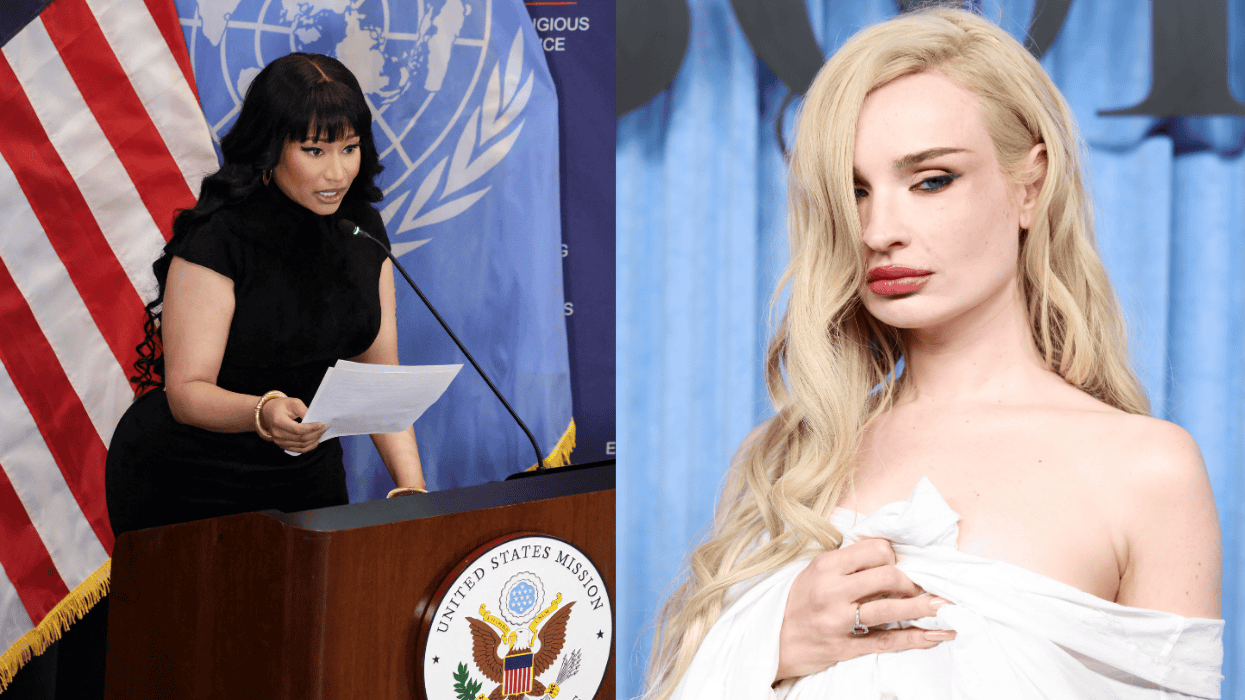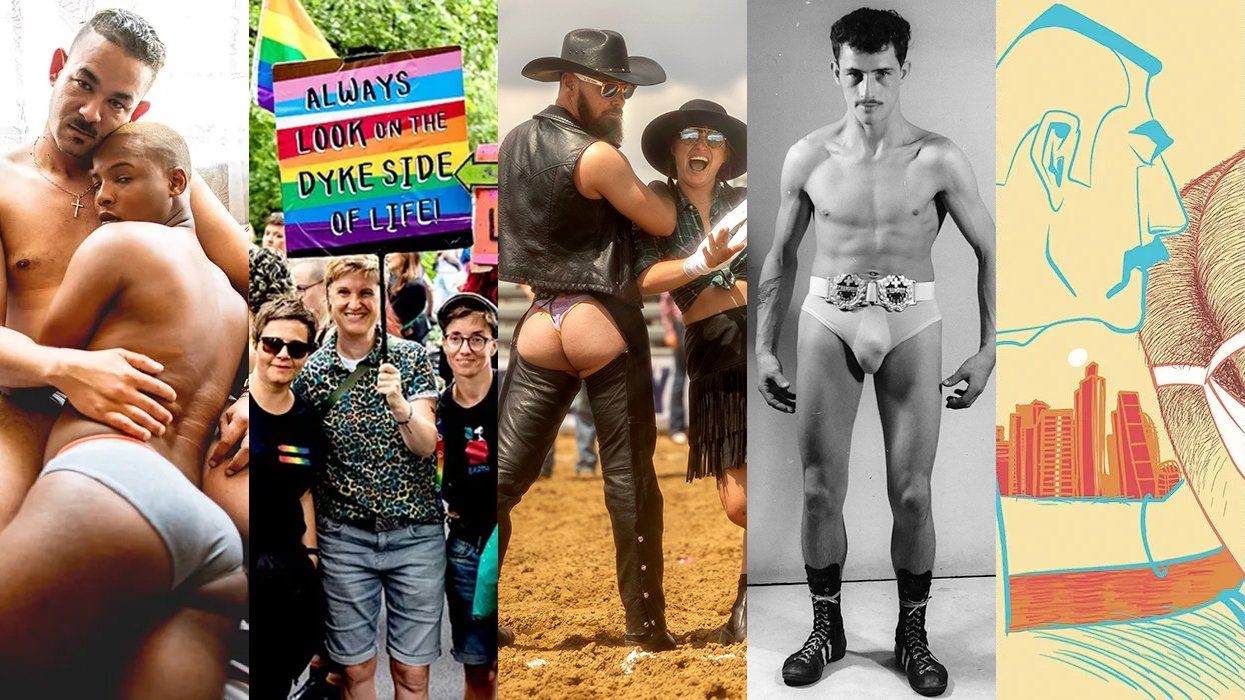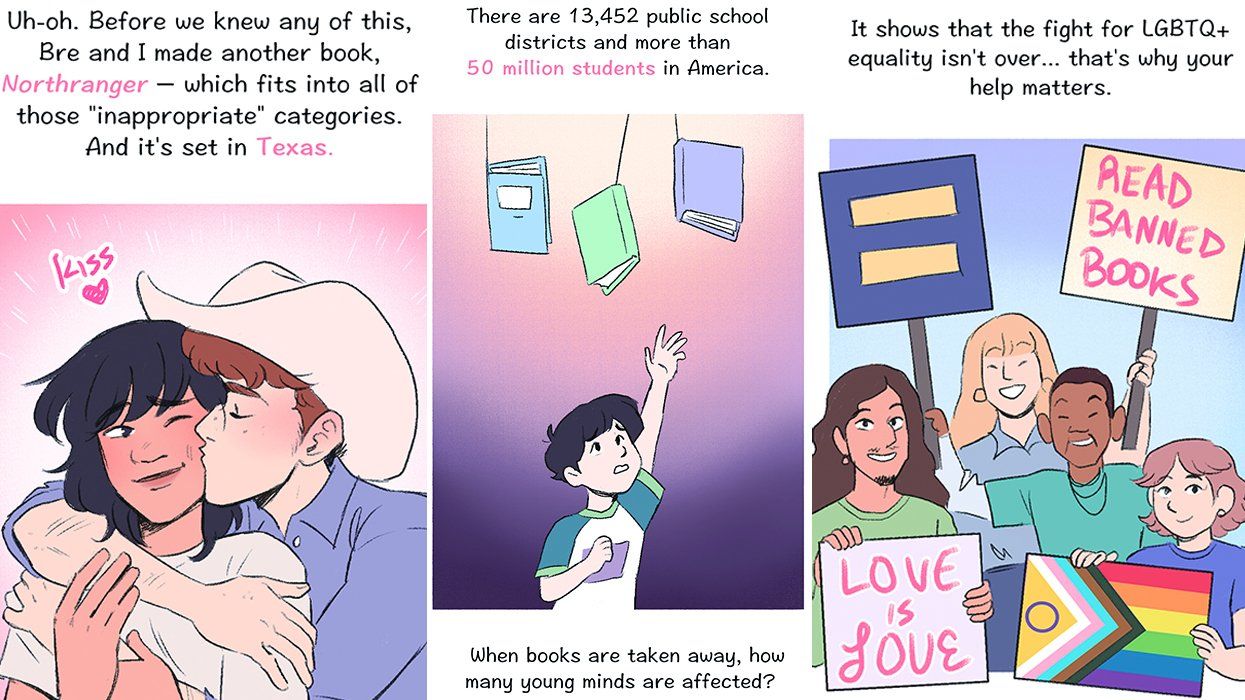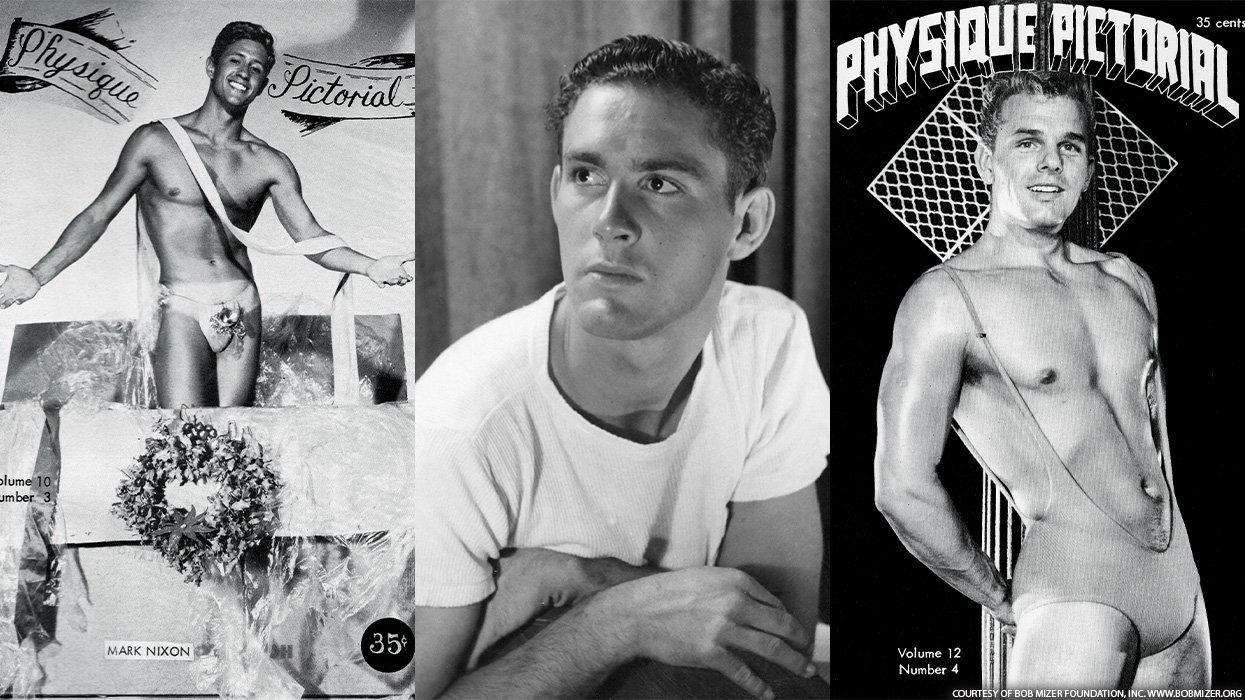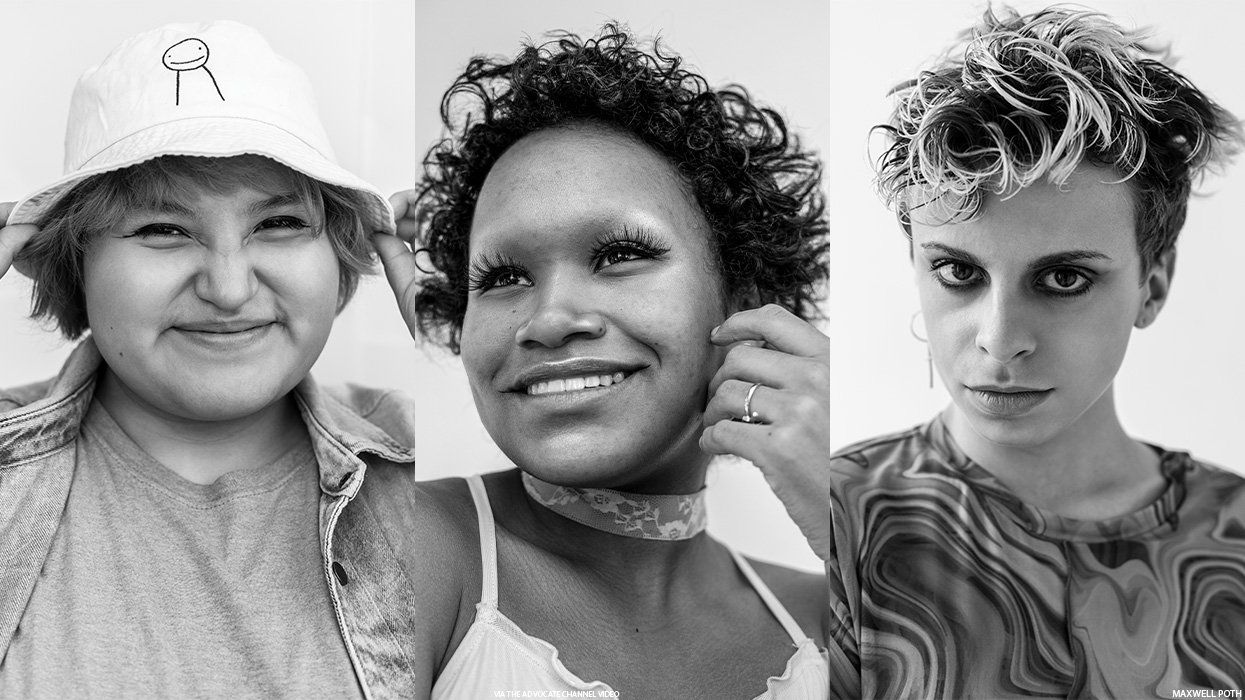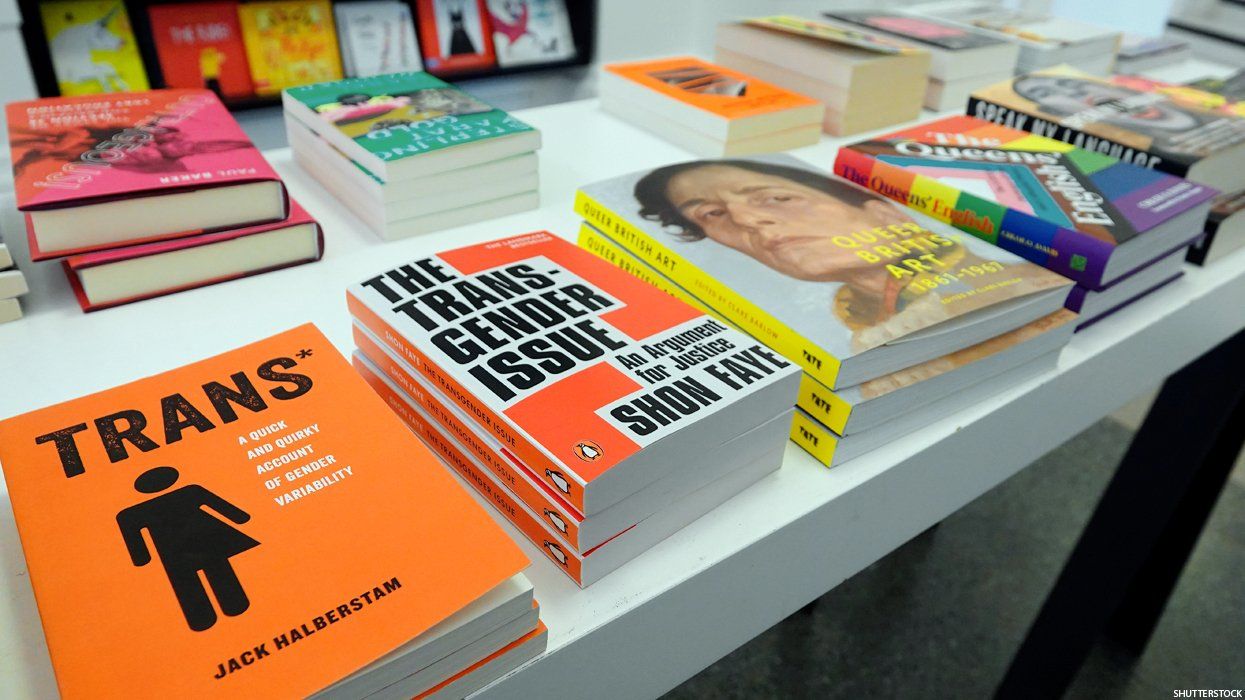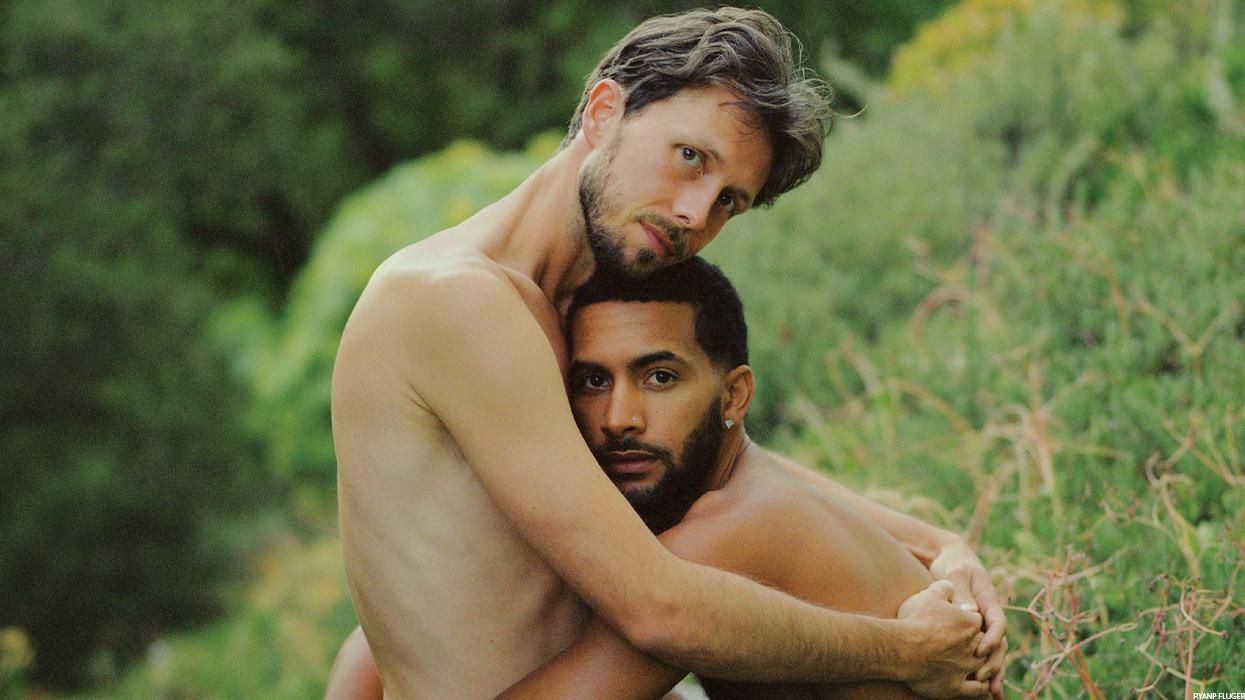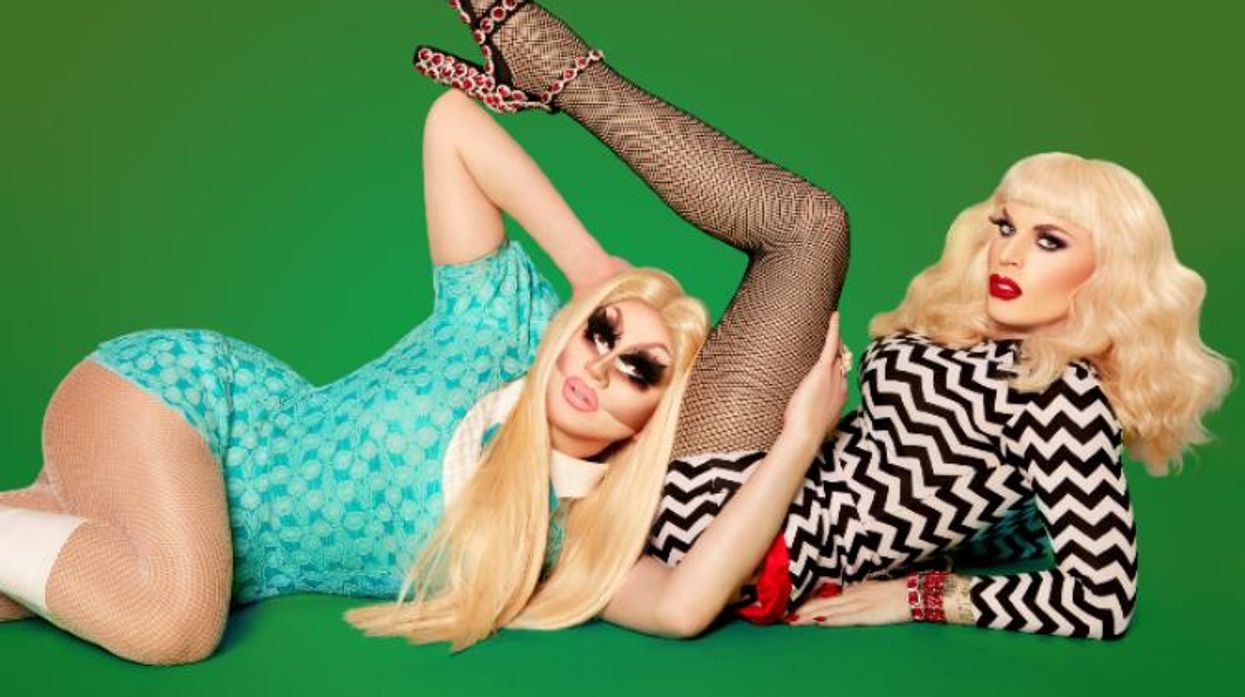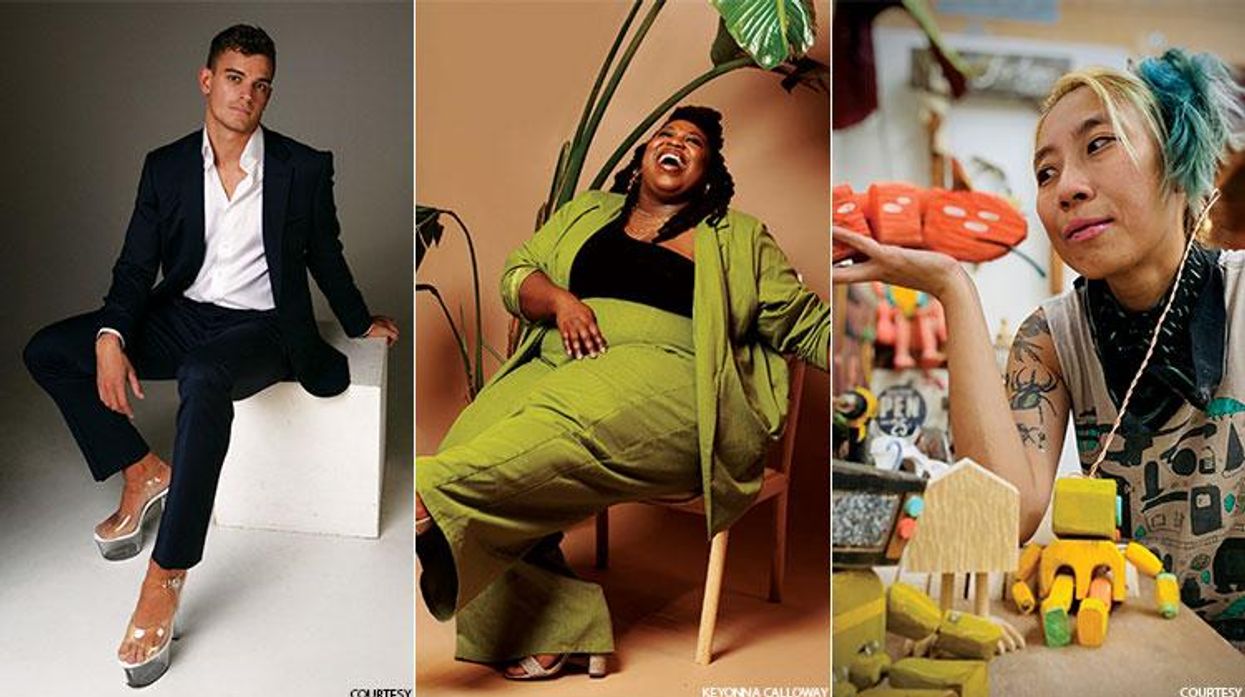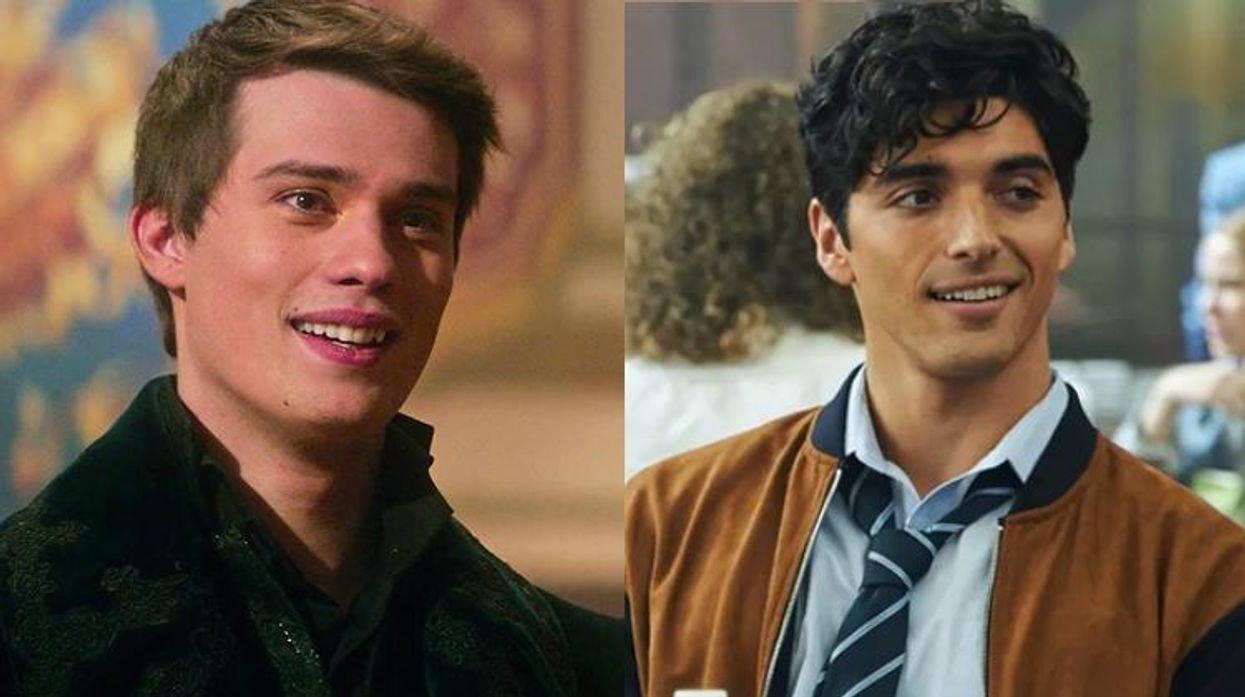Felix D'Eon has long been fascinated with art history, reveling in everything from Edwardian fashion and the golden-era of American comics, to Japanese printmaking and children's book illustrations. Though visually enrapturing, the subject matter of these works never connected with D'Eon, who's a queer Chicano man, born in Mexico and raised in Southern California. Here, the artist saw an important opportunity.
By appropriating the aesthetic of classic illustrations and trading out straight subjects for his own LGBTQ characters, D'Eon found he could use an already established visual language to showcase queer communities in a celebratory light. His work features a multicultural spectrum of queer love, seduction and sex, all presented in an antiquitous format that aims to normalize and empower historically marginalized people.
Related | Chicano Artist Felix D'Eon's Gay Lottery
D'Eon's Gay Lottery series is a prime example of how his work explores queer culture, flaunts his understanding of vintage illustration and speaks to his own intersectional identity all at once. Prints are labeled with numbers, like a lottery, and each focuses on a different element of the LGBTQ experience: One says "El Sugar Papi," and shows a suited man with gifts, aptly sitting on a sugar bowl; another one reads, "El Oso," or "Bear," with a grizzly man baring his belly; "El Trans" stars a transgender man who's undergone chest surgery. While society may tokenize or oppress these queer pillars, D'Eon's depiction erases all shame.
We caught up with D'Eon, who currently lives in Mexico City, to talk more about his Mexican-American background, well-researched inspirations and practicing the native Mexican religion Mexicayotl.
OUT: Where are you from and how did you first begin illustrating?
Felix D'Eon: I am from Guadalajara, Mexico, but was brought to the U.S. by my mother when I was a baby; I grew up in California and consider myself Mexican-American. My father is French. I moved back to Mexico four years ago. I have always been a painter, it's the only thing I have ever wanted to do. I consider myself a fine artist rather than an illustrator; while I use illustrative techniques, and my work is inspired by vintage illustration, the work itself speaks to a larger project than simply illustrating stories. I quit my last relatively normal job (I was an artist model) about 10 years ago; I have been a full time artist ever since.
You have a very focused illustrative style. What do you pull inspiration from?
My work derives from many sources; children's book illustration from the turn of the last century as well as the '50s, Japanese Ukiyo-e painting and American golden-era comics are a few of the sources I mine for inspiration. An early inspiration in college was Kara Walker. While I don't think our work has much in common, I am deeply motivated by her sense of social justice and the forces of history. I love Hokusai and Utamaro; I am deeply influenced by Japanese art.
When did you begin exploring queer subjects?
I have always painted queer subject matter. In high school I painted my friends and boyfriends, often in the nude. However, it really started as something of an accident. In college I made lots of studies of nude models, both male and female, and started selling them on eBay. The male drawings sold much more readily than the female ones, and eventually, it turned into a business. Initially, I really didn't have any ideas about the sort of drawings I was selling online; they were simply lovely and sensuous studies of beautiful men. However, over time, the work developed on its own, towards something more inclusive (so that today I paint all kinds of different queer identities), as well as more focused. I see my work as politically motivated; it is a re-invention of both the past and familiar artistic styles so as to express a sense of queer desire and subjectivity which had been absent before.
A photo posted by Felix D'Eon (@felixdeon) on
Who are your models for these illustrations?
I paint boyfriends, friends, strangers I meet at the gym or on the subway, fans who ask to pose, random people at parties--anybody who seems like they would be great in a painting. Usually, I have the model come to the studio; I take nude photos (usually). I select the best photo to express my idea, print and trace it on paper (I could draw it freehand, but that just adds more time to the process for no reason). I than research the clothing and props and setting, and invent all of that freehand, over the nude bodies of the models. Finally, it is all painted with ink, markers, and watercolors.
Your work is so inclusive. Why is this important to you?
The inclusiveness is very important to me. As both a gay man and as Latino, I have felt marginalized my entire life, sometimes dangerously so; deprived of rights others consider basic, or at times feeling physically threatened because of my sexuality or my ethnicity. In my work, I take a historical, artistic language (as in art nouveau illustration) used to express safe, romantic ideas, which had heretofore also been the province of the white, heterosexual mainstream, and use it to paint gay men, for example. The feelings one associates with the artistic style continue to cling to the image, but now, with a new subject matter which had not before been represented in such a way. The power of the original style of image is turned on its head, and extended to include my community.
However, over time I decided that "my community" did not mean only white or Latino gay men, but all queer people; the same thing happens weather I paint a gay or a lesbian couple, or a transgender person. The work is a political statement. Furthermore, the feeling of seeing oneself reflected in art is very important; this is something which I think straight people might take for granted, as almost all art in the West has historically been made for them. But to see ourselves painted in the same way, with the same seriousness, also gives our emotions, our desire, and our love, the same seriousness. I try to be as inclusive as possible in order to give as many people as possible that feeling.
A photo posted by Felix D'Eon (@felixdeon) on
Outside of art, what do you enjoy doing?
I am a big traveler. Every year I try to leave Mexico (or the US when I used to live there) and spend time some place new. I am always inspired by the art I encounter and the people I meet. Day to day, I am madly passionate about clothes. I have a room in my house dedicated to my costume closet, and as a hobby I often spend time making beautiful garments and accessories. I have gatherings or parties once or twice a week in which I strip my friends naked and dress them in nothing but jewels. I am also Mexicayotl. Mexicayotl is a native Mexican religion; I practice sacred dance once a week and participate in ceremonies on a regular basis. My grandmother was Huichol, a Mexican native tribe, and I feel strongly drawn to the Indigenista movement.


